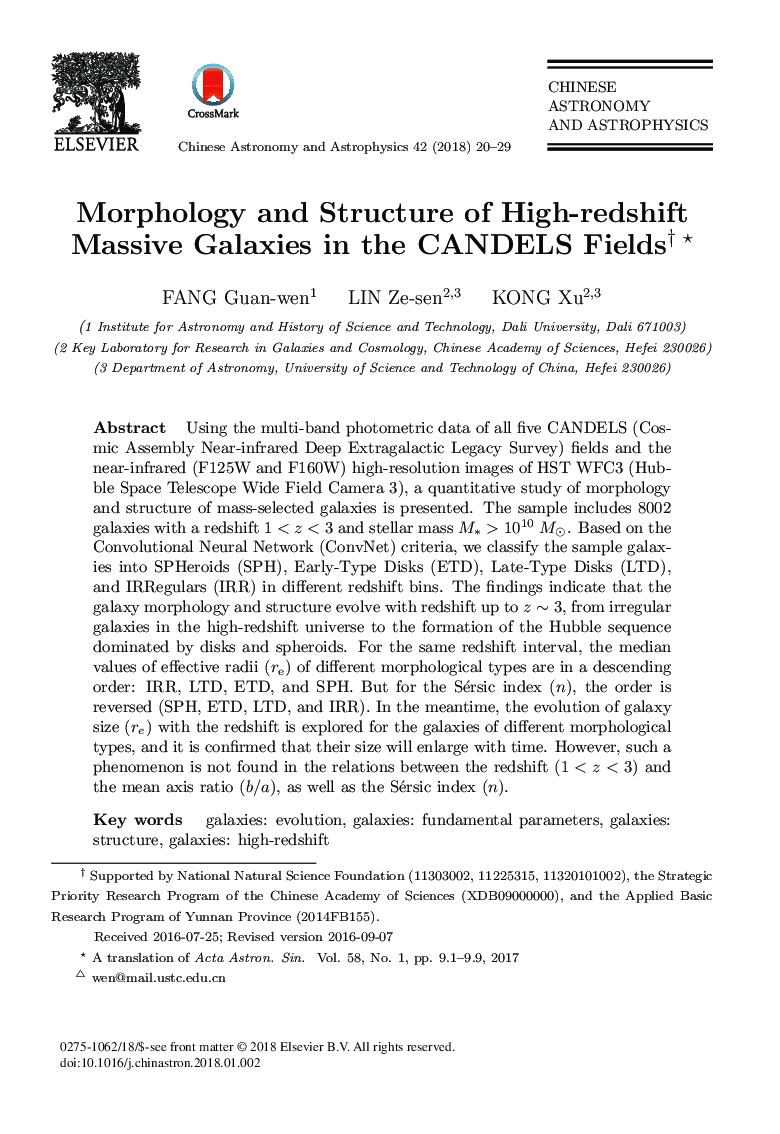| Article ID | Journal | Published Year | Pages | File Type |
|---|---|---|---|---|
| 8133143 | Chinese Astronomy and Astrophysics | 2018 | 10 Pages |
Abstract
Using the multi-band photometric data of all five CANDELS (Cosmic Assembly Near-infrared Deep Extragalactic Legacy Survey) fields and the near-infrared (F125W and F160W) high-resolution images of HST WFC3 (Hubble Space Telescope Wide Field Camera 3), a quantitative study of morphology and structure of mass-selected galaxies is presented. The sample includes 8002 galaxies with a redshift 1 < z < 3 and stellar mass M*> 1010Mâ. Based on the Convolutional Neural Network (ConvNet) criteria, we classify the sample galaxies into SPHeroids (SPH), Early-Type Disks (ETD), Late-Type Disks (LTD), and IRRegulars (IRR) in different redshift bins. The findings indicate that the galaxy morphology and structure evolve with redshift up to z â¼ 3, from irregular galaxies in the high-redshift universe to the formation of the Hubble sequence dominated by disks and spheroids. For the same redshift interval, the median values of effective radii (re) of different morphological types are in a descending order: IRR, LTD, ETD, and SPH. But for the Sérsic index (n), the order is reversed (SPH, ETD, LTD, and IRR). In the meantime, the evolution of galaxy size (re) with the redshift is explored for the galaxies of different morphological types, and it is confirmed that their size will enlarge with time. However, such a phenomenon is not found in the relations between the redshift (1 < z < 3) and the mean axis ratio (b/a), as well as the Sérsic index (n).
Keywords
Related Topics
Physical Sciences and Engineering
Physics and Astronomy
Astronomy and Astrophysics
Authors
Fang Guan-wen, Lin Ze-sen, Kong Xu,
